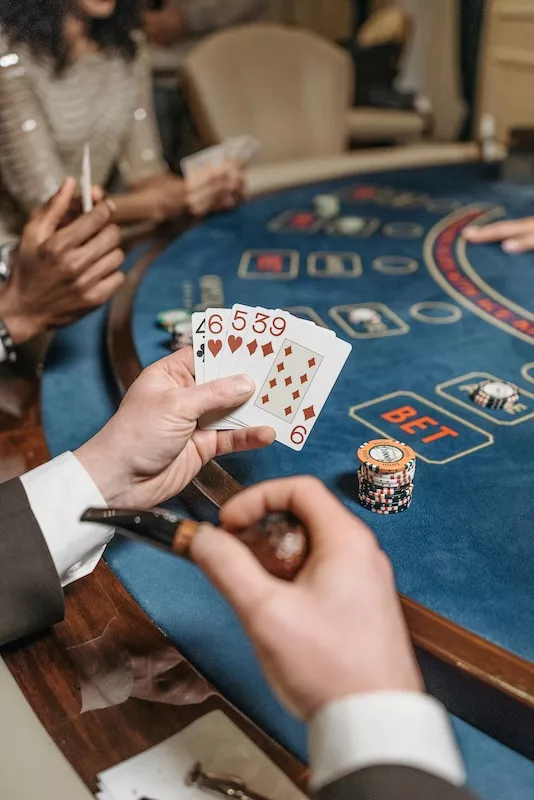Art is everywhere in France, and a deep appreciation and respect for the arts are common for the French. France is home to 1,218 museums, and some of them receive more than 1 million visitors annually.
This article aims to highlight some of the most popular and unique museums found within Paris that will undoubtedly make you fall in love with French and Modern architecture. Which one will you visit first?
Musée du Louvre
Location - Rue de Rivoli, 75001 Paris | Highlights - La Joconde (Mona Lisa) by Leonardo da Vinci, Dying Slave by Michelangelo, Great Sphinx of Tanis, and Winged Victory of Samothrace

The Musée du Louvre (The Louvre) is the world's largest art gallery. It is located on the right bank of the Seine in the city's 1st arrondissement (district). The museum features a collection of work that spans from ancient civilizations to the mid-19th century. It was initially opened on August 10th, 1793, with an exhibition of 537 paintings. Today, the museum features over 380,000 pieces, divided into eight curatorial departments: Egyptian Antiquities, Greek, Etruscan, and Roman Antiquities; Islamic Art; Sculpture; Decorative Arts; Paintings and Prints. The Musée du Louvre is one of the most famous museums in the world, receiving about 15,000 visitors daily from around the world.
Musée du Quai Branly
Location - 37 Quai Branly, 75007 Paris | Highlights - The Hei-tiki pendant (Maori), the mask with the image of the hare (Dogon), the Shaman costume (Évenk)

The Musée du Quai Branly (Quai Branly Museum) opened in 2006 and is the newest major museum in Paris, focusing on indigenous art and cultures of Africa, Asia, Oceania, and the Americas. Within Paris, the museum is located in the 7th arrondissement of Paris, on the left bank of the Seine. Currently, the museum holds a collection of more than a million objects and artifacts, of which 3,500 are on display at any given time at the Main Collections Level (Plateau des Collections). A selection of objects from the museum is loaned out, to be displayed at other museums such as The Louvre. The museum also features temporary exhibits that touch upon various subjects and themes, including Vietnam propaganda and Polynesian culture in America. Today, the museum has been the center of debate regarding the restitution of looted cultural artifacts.
Musée National d'Art Moderne
Location - Place Georges Pompidou, 75004 Paris | Highlights - Fountain by Marcel Duchamp, Blue Monochrome (IKB 3) by Yves Klein, Self-Portrait in Drag by Andy Warhol, and the panoramic view over Paris from 6th floor

The Musée National d'Art Moderne (National Museum of Modern Art) is located in the Centre Pompidou, a complex building within Paris's 4th arrondissement, immediately recognizable by its exterior escalators and enormous coloured tubing, designed by Renzo Piano and Richard Rogers. The museum has the second-largest collection of modern and contemporary art in the world, with more than 100,000 works of art from 90 countries.
The works of iconic artists are displayed chronologically over two sections: the Modern Period, from 1905 to 1960 (Matisse, Picasso, Dubuffet, etc.), and the Contemporary Period, from 1960 to the present day (Andy Warhol, Niki de Saint Phalle, Anish Kapoor, etc.). The work displayed in the museum often changes to showcase the wide variety of their collection, which can vary from paintings, sculptures, photography, cinema, and architecture.
Musée d’Orsay
Location - 1 Rue de la Légion d’Honneur, 75007 Paris | Highlights - Bal du Moulin de la Galette by Auguste Renoir, Self-Portrait by Vincent Van Gogh, Olympia by Edouard Manet

The Musée d'Orsay initially opened in 1986 and including paintings, sculptures, furniture, and photography. In Paris, the museum is located on the left bank of the Seine River opposite the Tuileries Gardens in the Gare d’Orsay, a railway station and hotel built by Victor Laloux in 1900 that served as a terminus for the Chemin de Fer de Paris à Orléans (Paris-Orléans Railway). It was the first urban terminal station with electricity in the world.
The museum houses paintings from various famous artists, including Vincent van Gogh, Claude Monet, and Pierre-Auguste Renoir. The Musée d’Orsay is scheduled to undergo a massive expansion over the next decade, funded by an anonymous American patron. The expansion building will be called “Orsay Wide Open” and will allow visitors spacious galleries and educational resources.
Hungry? One of the most beautiful lunch spots in all of Paris is the Musée d'Orsay's restaurant. The setting is elegant, and the food is delicious; reservations aren't required. Even if you don't want to visit the museum, guards will grant restaurant visitors access to the museum entrance.
Palais de Tokyo
Location - 13 Avenue du Président Wilson, 75116 Paris

The Palais de Tokyo (Tokyo Palace) is a museum dedicated to modern and contemporary art, located in Paris's 16th arrondissement. The self-proclaimed “anti-museum” doesn't house a permanent collection; instead, it focuses on exhibitions' rotating schedule. In 1937, the museum was initially named ‘Palais des Musées d'art moderne’ (Palace of the Museums of Modern Art). The current contemporary art center opened in March 2002, under its current name, is now the largest center for contemporary art in Europe. The museum also has a unique space called The Pavillon, which was established in 2001 to be a studio space for resident artists and curators.
Musée des Arts Forains
Location - 53 Avenue des Terroirs de France, 75012 Paris | Highlights - A bicycle-powered merry-go-round constructed in 1897 (one of only two left in the world)
The Musée des Arts Forains (Fairground Museum) is a private museum of funfair and fairground objects located within Les Pavillons de Bercy, in Paris's 12th arrondissement. The museum was created in 1996 by Jean-Paul Favand, an actor and antique dealer. Currently, the museum contains various objects dating between 1850-1950, including amusement rides, fair stalls, and restored attractions. The collection is now the largest in Europe and one of the largest in the world! Since this is a private museum, visitors need to make an appointment for a tour that allows them to participate in activities such as riding the carousels and watching an automaton show.
Musée du Parfum
Location - 9 Rue Scribe, 75009 Paris | Highlights - Ancient bottles retracing the history of fragrance from Ancient Egypt to the 20th century

The Musée du Parfum is a private museum dedicated to French perfume located in the 9th arrondissement of Paris. The museum opened in 1983 in a Napoleon III town-house built-in 1860, creating the atmosphere of a late nineteenth-century perfume factory. The museum is divided into two sections; the first is dedicated to the manufacturing process from raw materials to bottling, along with the creative process of creating the fragrance. The second section of the museum features a collection of perfume and fragrances throughout history from Ancient Egypt to the 20th century.
The Musée du Parfum also offers a workshop where people can create their own personal Eau de Cologne. At the end of the program, you leave with a personalized 100 ml bottle and pouch, a diploma signed by the teacher, and your perfumer’s apprentice apron.
Muséum National d'Histoire Naturelle
Location - 36 Rue Geoffroy Saint-Hilaire, 75005 Paris | Highlights - Gallery of Evolution, Gallery of Paleontology and Comparative Anatomy

The Muséum National d'Histoire Naturelle (National Museum of Natural History) is the world's largest museum dedicated to natural history. The museum was initially founded in 1635 as the “Royal Medicinal Plant Garden,” it later became the National Museum of Natural History in 1793. The main museum is located in Paris, on the left bank of the Seine. However, today, the museum covers several sites, including the Jardin des Plantes and its Zoo, the Musée de l’Homme, and around twelve other locations across France. The Gallery of Evolution is one of the museum's highlights and focused on the evolution of life, featuring over 7,000 specimens. The Gallery of Paleontology and Comparative Anatomy houses around 650 skeletons of living and extinct species. The Gallery of Mineralogy and Geology features a 770,000-piece collection of minerals, rocks, gems, and meteorites. Finally, the Botanical Gallery is the world’s largest herbarium, housing over eight million specimens. Throughout the year, there are various events, activities, and temporary exhibitions that make for a unique experience every visit.
Musée National de l'Orangerie des Tuileries
Location - Jardin des Tuileries, 75001 Paris | Highlights - Monumental Water Lilies cycle by Claude Monet

The Musée National de l'Orangerie des Tuileries is an art museum dedicated to impressionist and post-impressionist paintings, located in the Tuileries Palace’s old orangery, a building used to shelter citrus trees from the gardens in winter. The building was initially constructed in 1852 as an orangery until 1922 when the French government transformed it into an art gallery focused on French modern art, especially from the late 19th to the early 20th century. The highlight of the museum is the monumental Water Lilies 8-panel painting cycle by Claude Monet. The painting is composed of eight decorative panels painted, spanning a total length of 91 meters overall. The piece was gifted by Claude Monet to the French State to celebrate peace after the end of World War One. The Musée National de l'Orangerie des Tuileries also features temporary exhibitions; film screenings; and educational programs for schools, children, and families.
Musée de l'Armée
Location - 129 Rue de Grenelle, 75007 Paris | Highlights - Dome church, Napoleon Bonaparte tomb, and Veteran Chapel

The Musée de l'Armée (Army Museum) is located at the Hôtel National des Invalides in the 7th arrondissement of Paris and is dedicated to military artifacts. The museum was created in 1905 and resulted from the merger of the Musée d'Artillerie, initially opened in 1796, and the Musée de l’Armée was created in 1871. The Musée de l'Armée is the largest museum of military history in France and one of the largest in the world. The museum’s collection is presented chronologically, starting with the early 13th century and ending with the Second World War. The museum also offers guided tours, story tours for children, and educational workshops for schools.
Visitor Tips
Visiting Paris museums and monuments can sometimes be crowded, overwhelming, and expensive. Here are some tips to make the experience more enjoyable.
Due to the current pandemic, some museums may have altered operating hours and limited capacity. It t is best to consult the museum’s website before planning your visit.
Go at night
Some of the larger museums are open at night. The Musée du Louvre is opened Wednesday and Friday until 10:00 pm. The Musée d’Orsay and the Musée du Quai Branly are open Thursdays until 9:45 pm. The Palais de Tokyo is accessible until midnight every night except Mondays.
Go early
Go Early
If you are an early bird and want to be the first to catch the Mona Lisa, the Musée du Louvre opens at 9:00 am.
Buy tickets in advance or buy a Museum Passes
Go Early
You can buy advanced tickets in person or on the internet for most museums, monuments, and exhibits at fnactickets.com.
Museum Passes are available at most museums and are a good value if you plan on going to at least two museums a day as they allow you to cut through the lines. Passes are good at over 60 museums and monuments in Paris and the surrounding areas.
Free Admission
Many museums in Paris are free on the first Sunday of the month. Click here for the list. Some museums also offer free entry for various criteria such as being under 25 years old and from the European Union or under 18 years old.







